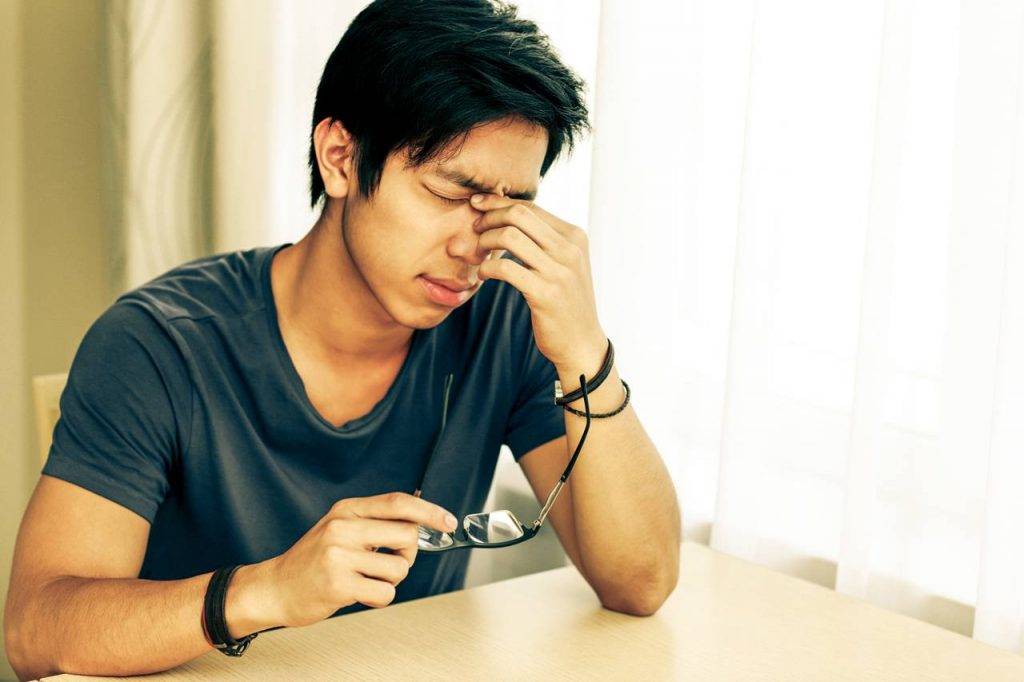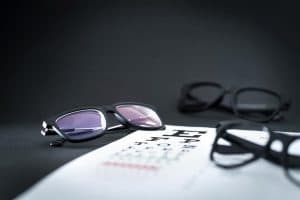Farsightedness, also known as long-sightedness or hyperopia, causes near objects or images to appear blurry.
A hyperopic eye focuses an image behind the retina, instead of on the retina— causing words on a page, or images on your phone to appear out of focus.
It is estimated that 13% of school age children are far-sighted.
Hyperopia can usually be corrected using corrective eyeglasses or contact lenses and is noted on the eye doctor’s optical prescription by a plus sign, such as +1.00 or +2.25.
Being far-sighted is not just a matter of wearing glasses— hyperopia can also affect a child’s visual development and their academic and sports performances.
What causes hyperopia?
Hyperopia can occur as a result of any of the following reasons:
- The eyeball is shorter than normal
- The cornea is less curved than normal
- The lens is thinner than normal
Hyperopia is an inherited vision condition that can develop in childhood, or later on in life. Although most cases of hyperopia develop because it runs in the family, complications in utero or early childhood such as illness or trauma to the eye, can increase the risk of hyperopia.
Signs of hyperopia in children
Signs and symptoms of hyperopia include:
- Near images or objects appear blurry, distance vision is clear
- Difficulty reading
- Headaches or fatigue after near vision activities (reading, writing, computer use)
- Eye strain
- Difficulty focusing on near objects
- Squinting
- Holding books at arm’s length
- Inward eye turn when trying to focus
In mild cases of hyperopia, a child’s visual acuity may not be affected, though they may complain of fatigue or headaches when reading or using the computer.
However, a child with high levels of hyperopia may find it difficult to see clearly at all distances as a result of increased focusing effort that puts extra stress on the ocular muscles— causing additional vision problems.
If your child experiences any of these signs above contact an eye doctor near you.
SEE RELATED: What Is Myopia?
Can hyperopia impact learning?
In cases of high hyperopia, the focusing skills are forced to work extremely hard to read or see images clearly— consequently causing eye strain, fatigue, and headaches, and sometimes even an eye turn.
As a result of the increased stress that is placed on the eyes, many academic struggles can arise, specifically for reading and writing. In addition, high hyperopia can cause many children to struggle with attentional and behavioral issues, further increasing their academic challenges.
Hyperopia and eye turns
Accommodative esotropia, also known as “crossed eyes”, is a vision condition that can be caused by hyperopia. This condition occurs when one eye over focuses while trying to compensate for the refractive error in the other eye. The act of over-focusing causes the eye to turn inwards towards the child’s nose, and generally occurs when a child is tired, or trying to focus on a close object. Many children with an eye turn tend to rub their eyes, squint, or complain of headaches.
Accommodative esotropia can develop as early as six months of age and until the child reaches seven. The average onset of accommodative esotropia is around two to three years of age. Accommodative esotropia can indicate hyperopia in children, though a proper diagnosis is crucial.
Can school vision screenings detect hyperopia?
Most parents mistakenly believe that if their child passes a school vision screening, then an eye exam conducted by an eye doctor is not necessary.
Unfortunately though, most vision screenings may not detect hyperopia, so a comprehensive eye exam is actually essential.
Eye doctors use specialized tests and equipment to diagnose vision conditions that vision screenings simply cannot offer. During a comprehensive eye exam, your eye doctor may use a retinoscope to detect a refractive error, and a phoropter to measure the precise level of refractive error, including astigmatism. With these tools, your doctor can prescribe an accurate optical prescription to enable your child to see clearly and comfortably.
How is hyperopia treated?
Several options are available to correct hyperopia and improve clear vision.
- Eyeglasses. For most children with hyperopia, eyeglasses are the most common choice. Children with a higher optical prescription will need to wear glasses full time, while children with lower levels of hyperopia may only need to wear eyeglasses when reading or doing near work.
- Bifocal/Multifocal lenses. These lenses contain two or more lens powers and are used for patients that present with different optical prescriptions— near vision and distance vision. These lenses are beneficial for children with focusing difficulties or accommodative esotropia.
- Contact lenses. Contact lenses provide clear vision at all distances and a wider field of view when compared to eyeglasses. However, contact lenses are placed directly on the eyes, and therefore require good hygiene practices to maintain eye health. Contact lenses are generally prescribed for older children.
- Laser procedures. Laser procedures such as LASIK (laser in situ keratomileusis) or PRK (photorefractive keratectomy) are generally recommended for patients over the age of 20, mainly because the eye generally has stopped growing by this age. A laser procedure can provide clear vision by reshaping the cornea to improve the eye’s focusing abilities.
If your child complains of blurry vision, tiredness or headaches during near work activities, or if you notice any changes in your child’s vision, schedule an eye exam with an eye doctor.
LEARN MORE: Guide to Pediatric Eye Conditions
A comprehensive eye exam will facilitate detection of hyperopia, and a precise calculation of your child’s optical prescription.
Hyperopia is a common vision condition that can affect a child’s near vision acuity, and cause both academic and behavioral challenges.










